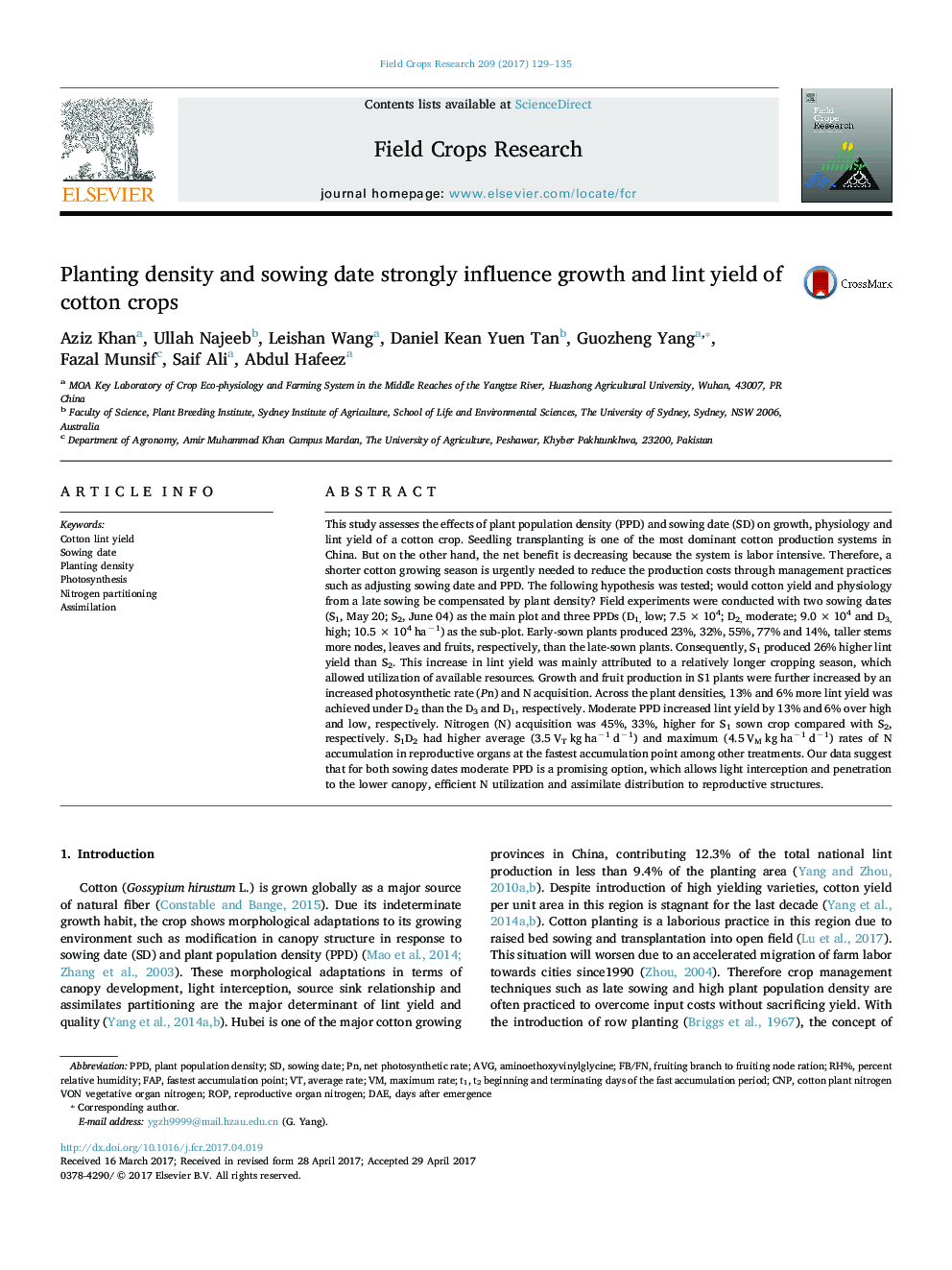| کد مقاله | کد نشریه | سال انتشار | مقاله انگلیسی | نسخه تمام متن |
|---|---|---|---|---|
| 5761509 | 1624654 | 2017 | 7 صفحه PDF | دانلود رایگان |
عنوان انگلیسی مقاله ISI
Planting density and sowing date strongly influence growth and lint yield of cotton crops
ترجمه فارسی عنوان
تراکم کاشت و تاریخ کاشت به شدت بر رشد و عملکرد بذر محصولات پنبه تاثیر می گذارد
دانلود مقاله + سفارش ترجمه
دانلود مقاله ISI انگلیسی
رایگان برای ایرانیان
کلمات کلیدی
RH%AVGCNPPPDROPFAPaminoethoxyvinylglycine - aminoethoxivinylglycineSowing date - تاریخ کاشتPlant population density - تراکم جمعیت گیاهPlanting density - تراکم کاشتMaximum rate - حداکثر نرخDae - دلمdays after emergence - روز بعد از ظهورPhotosynthesis - فتوسنتزnet photosynthetic rate - نرخ فتوسنتزی خالصNitrogen partitioning - پارتیشن بندی نیتروژنassimilation - یکسانسازی
موضوعات مرتبط
علوم زیستی و بیوفناوری
علوم کشاورزی و بیولوژیک
علوم زراعت و اصلاح نباتات
چکیده انگلیسی
This study assesses the effects of plant population density (PPD) and sowing date (SD) on growth, physiology and lint yield of a cotton crop. Seedling transplanting is one of the most dominant cotton production systems in China. But on the other hand, the net benefit is decreasing because the system is labor intensive. Therefore, a shorter cotton growing season is urgently needed to reduce the production costs through management practices such as adjusting sowing date and PPD. The following hypothesis was tested; would cotton yield and physiology from a late sowing be compensated by plant density? Field experiments were conducted with two sowing dates (S1, May 20; S2, June 04) as the main plot and three PPDs (D1, low; 7.5 Ã 104; D2, moderate; 9.0 Ã 104 and D3, high; 10.5 Ã 104 haâ1) as the sub-plot. Early-sown plants produced 23%, 32%, 55%, 77% and 14%, taller stems more nodes, leaves and fruits, respectively, than the late-sown plants. Consequently, S1 produced 26% higher lint yield than S2. This increase in lint yield was mainly attributed to a relatively longer cropping season, which allowed utilization of available resources. Growth and fruit production in S1 plants were further increased by an increased photosynthetic rate (Pn) and N acquisition. Across the plant densities, 13% and 6% more lint yield was achieved under D2 than the D3 and D1, respectively. Moderate PPD increased lint yield by 13% and 6% over high and low, respectively. Nitrogen (N) acquisition was 45%, 33%, higher for S1 sown crop compared with S2, respectively. S1D2 had higher average (3.5 VT kg haâ1 dâ1) and maximum (4.5 VM kg haâ1 dâ1) rates of N accumulation in reproductive organs at the fastest accumulation point among other treatments. Our data suggest that for both sowing dates moderate PPD is a promising option, which allows light interception and penetration to the lower canopy, efficient N utilization and assimilate distribution to reproductive structures.
ناشر
Database: Elsevier - ScienceDirect (ساینس دایرکت)
Journal: Field Crops Research - Volume 209, 1 August 2017, Pages 129-135
Journal: Field Crops Research - Volume 209, 1 August 2017, Pages 129-135
نویسندگان
Aziz Khan, Ullah Najeeb, Leishan Wang, Daniel Kean Yuen Tan, Guozheng Yang, Fazal Munsif, Saif Ali, Abdul Hafeez,
